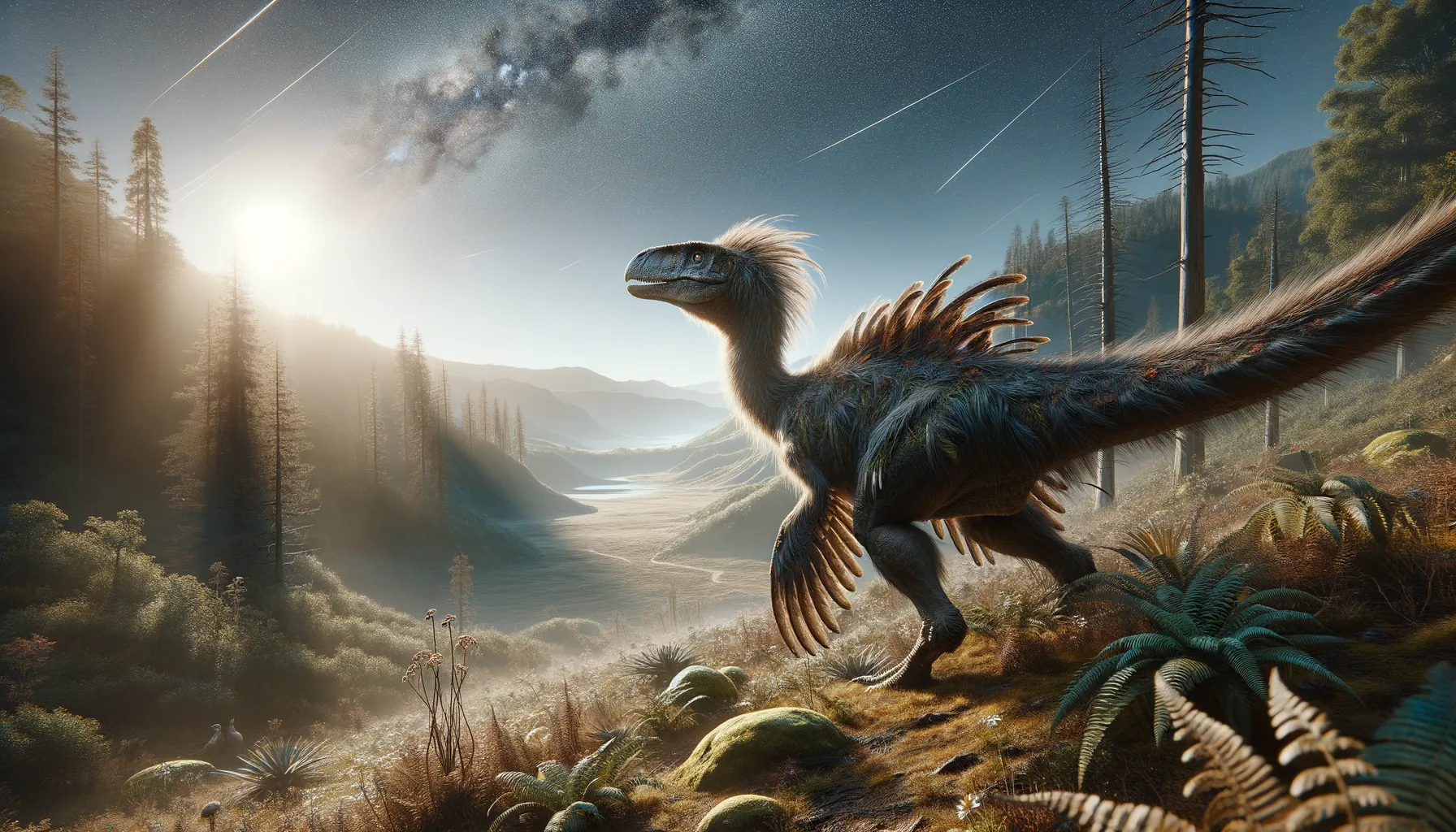
Anomalipes
A glimpse into the ancient avian lineage!
Period
Cretaceous
Length
Measured approximately 3 meters long.
Height
Stood about 1 to 1.5 meters tall.
Weight
Weighed roughly 50 to 100 kilograms.
Anomalipes was a bird-like dinosaur that roamed the Earth during the late Cretaceous period. Despite its size, Anomalipes was a fascinating creature with unique physical traits. It likely had feathers and featured a combination of characteristics that made it both agile and adaptable to its environment. These traits helped it survive in the diverse ecosystems of the time.
Diet
Anomalipes was omnivorous, with a diet consisting of small animals, plants, and insects. Its versatile feeding habits allowed it to thrive in various environments.
Hunting
Anomalipes likely hunted small, fast-moving prey using its sharp claws and beak. It might have relied on stealth and quick bursts of speed to capture its meals.
Environmental challenges
The Cretaceous period presented Anomalipes with various environmental challenges, including fluctuating temperatures and changes in vegetation. This dinosaur needed to adapt to occasional resource scarcity. It also faced competition from both larger predators and other small dinosaurs.
Speed
Likely moderate, suited for short sprints.
Lifespan
Estimated around 20-30 years.
First discovery
Discovered in the late 20th century in China.
Fun Facts
- Anomalipes was discovered in China and lived during the Cretaceous period, over 66 million years ago.
- The name Anomalipes means 'unusual foot' due to its distinct foot structure that puzzled scientists.
- This dinosaur was part of a group called theropods, which are more famously known as the same group that includes the Tyrannosaurus Rex.
- Anomalipes is believed to have been a relatively small dinosaur, not more than a few meters in length.
- This dinosaur belongs to a lesser-known group called Alvarezsauridae, known for their specialized limbs, possibly used for digging or foraging.
- Anomalipes may have been covered in simple feather-like structures, giving it a unique look among its relatives.
- The discovery of Anomalipes helps scientists understand the diversity of dinosaurs that once roamed our planet.
Growth and Development
Anomalipes likely grew rapidly during its early years, reaching near adult size rather quickly. This quick growth spurt could have been a strategy to evade predators. As it matured, its development may have included acquiring advanced physical features like pronounced claws for varied diets.
Habitat
Anomalipes inhabited forested areas with plenty of vegetation and cover. These environments provided food resources and protection from larger predators. The forest floor offered a variety of opportunities for finding both plant and animal nourishment.
Interaction with other species
Anomalipes may have interacted with many species, from small mammals to larger herbivorous dinosaurs. It might have displayed competitive behavior over food resources. Instances of avoidance with larger predators would have been common.
Natural lifespan
It had a natural lifespan that ranged up to 30 years.
Reproduction
Anomalipes reproduced through egg-laying, like many dinosaurs of its kind. It likely built nests in concealed locations to protect its eggs. Parental care might have involved guarding and cleaning the nest from potential predators.
Social behaviour
Anomalipes might have lived in small groups or pairs. Its social behavior could have facilitated cooperative foraging for food. Communication might have been through visual displays or vocalizations.
Fossil locations
Fossil evidence of Anomalipes has been primarily found in China. These discoveries have been crucial in understanding its morphology and ecological role. The fossil sites have provided insights into the diverse dinosaur fauna of the Cretaceous period in Asia.
